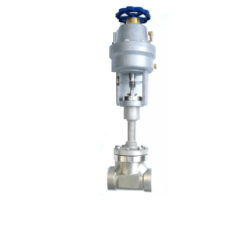- Control Valve
- Pneumatic Control Valve
- Pneumatic Angle Control Valve
- 3 Way pneumatic Diaphragm Control Valve
- 3 Way Converging and Diverging Control Valve
- Fluorine Lined Single Seat Control Valve
- Pneumatic Cage Control Valve
- Pneumatic Double Seat Control Valve
- Pneumatic Single Seat Globe Control Valve
- Pneumatic Flow Control Valve
- Pneumatic Sleeve Type Control Valve
- Pneumatic Actuated Globe Type Control Valve
- Electric Actuated Control Valve
- Pneumatic Control Valve
- Cryogenic Valve
- Pressure Reducing Valve
- Safety Valve
- Check Valve
- Gate Valve
- Butterfly Valve
- Globe Valve
- Ball Valve
- Electric Actuated Valve
- Electric Actuated Ball Valve
- Electric Actuated Butterfly Valve
- Electric Actuated Gate Valve
- Electric Actuated Globe Valve
- Pneumatic Actuated Valve
- Plunger Valve
- Strainers
- Steam Trap
- Knife Gate Valve
- Speciality Valve
- Alloy 20 Valve
- Duplex Valve
- Super Duplex Valve
- Hastelloy C276/B3 Valve
- Aluminium Bronze Valve
- Titanium Valve
- Bronze Valve
- Monel Valve
- Triple Duty Valve
- Suction Diffuser
- Diaphragm Valve
- Plug Valve
- Foot Valve
- Air Release Valve
- Surge Anticipator Valve
- Needle Valve
- Balancing Valve
Cryogenic Emergency Cut-Off Valve Supplier in Kuwait: Ensuring Safety in Extreme Low-Temperature Applications
Middleeast Valve is a premier Cryogenic Emergency Cut-Off Valve Supplier in Kuwait. It is a solution provider with expertise in valves that guarantee the safety and integrity of systems used in very low temperatures. We utilize our technical know-how and dedication to the provision of high-quality products to assist industries in safely handling cryogenic processes and provide innovative solutions to address the most stringent needs.
Working Mechanism:
During regular operation, the valve is open to permit flow of the cryogenic fluids. During an emergency, e.g., system failure or unsafe pressure, the Cryogenic Emergency Cut-Off Valve closes automatically, stopping flow and avoiding possible damage or safety threat. The actuator is initiated by control signals to achieve quick and certain closure.
Key Parts:
1)Valve Body: The cover that contains all the internal parts and can withstand high temperatures.
2)Actuator: The system that drives the valve, normally pneumatic, electric, or hydraulic, based on the application.
3)Seat and Seal: Provides tight closure of the valve and maintains a seal during emergency operations.
4)Stem and Plug: The primary parts that are directly involved with cutting off or passing the cryogenic liquids and gases.
5)Spring Mechanism: Offers a return force to close the valve automatically when needed.
Advantages:
1)Safety Assurance: Offers emergency shut-off on occurrence of dangerous conditions, guaranteeing system integrity.
2)Reliability: Engineered to perform under extreme cryogenic conditions without failing.
3)Quick Response: The valve is capable of closing instantly to avoid accidents and leaks.
4)Minimal Maintenance: Needs low maintenance and a long life of operation.
Industries:
1)Oil and gas Industry
2)Aerospace
3)LNG
4)Cryogenic Storage Tanks
Description:
Available materials: SS304, SS316, CF8M, CF8, F51, F55, F53, WCB, WC6, WCC, LCB, LCC
Class: 150 to 800
Nominal Pressure: PN25 to PN100
Size: 1/2” to 24”
Ends- Flanged, Threaded, Socket weld, Butt weld.
Operations: Lever Operated , Hand wheel operated , Electric Actuated and Pneumatic Actuated.



